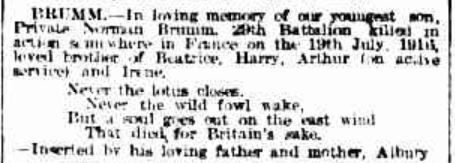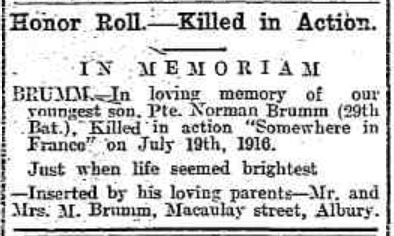Arthur Phillip BRUMM
Eyes brown, Hair dark brown eyes, Complexion dark
The Brumm family of Albury
With thanks to Mary Anderson for her recollections and contribution to writing this story about her Uncles Norman and Arthur.
Norman Brumm enlisted in Victoria in June 1915, perhaps influenced by his older brother Arthur who was serving in the AIF as a driver in Gallipoli and in France. At the time of enlistment, both brothers were living in Auburn, Victoria with Norman working as a pottery hand while Arthur was a bootmaker. Both however listed their father, Michael (Mick) in Albury NSW as next of kin; Mick was a wheelwright, then a typesetter for early Albury newspapers.
Norman (born 1896) and Arthur (born 1890) Brumm were the youngest sons of Michael and Mary (nee Lee) Brumm in a family of six – 4 boys and 2 girls. One of their older brothers, George, had died of typhoid fever in 1906 at 19 years old when Norman was just 9.
The Brumm children were active members of St Matthew’s Anglican Church in Albury and attended the Albury Public and the Albury High Schools.
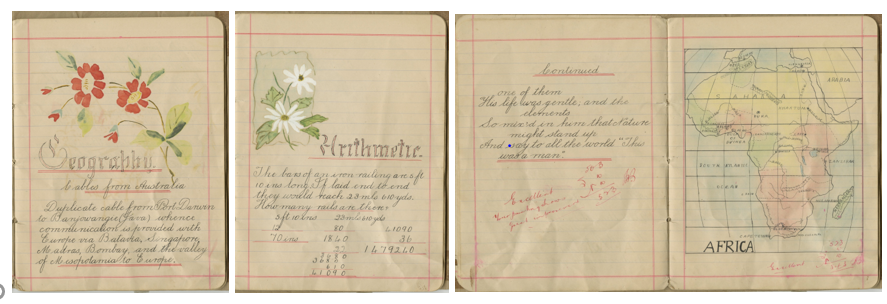
The Brumms were also keen swimmers and won quite a few swimming awards in local competitions. They swam in the Murray River at Albury and were members of the Life Saving Club. Norman’s father proudly noted on his roll of honour circular that Norman won the Swimming Championship at the Albury Superior Public School in 1909.
The Brumm family were also talented musicians. The men were members of the Albury City Band and had their own dance band/orchestra which played for many local dances as well as for the silent movies in Albury.
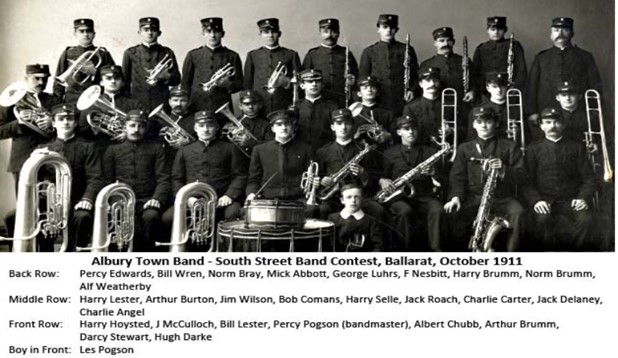
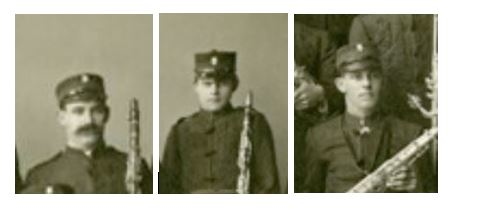
The boys’ father, Michael Brumm, had been born in Albury to German immigrant parents. People of German descent in the NSW Riverina were often treated with suspicion during World War One, even after showing strong pro-Australian views. Fortunately, the Brumm family did not suffer this problem perhaps due to their very strong participation in the community. Arthur, however, did suffer some adverse impacts as his record shows that he was transferred back to England for a short period as he was ‘of enemy extraction’. It must have been resolved satisfactorily as he was returned to active service only after a few weeks.
Arthur at War
Private Arthur Brumm (2466) enlisted in September 1914 and was assigned as a driver with the Army Service Corps. He embarked from Melbourne, Victoria on board HMAT A26 Armadale on 20 October 1914 and he saw service at Gallipoli, in Egypt and on the Western Front before returning home on 9 December 1918. It is believed that as a member of the 29th Battalion A.A.S.C 5th Divisional Train, Arthur was a part of the support services for the troops at Fromelles.
“The 5th Divisional Train……supported the illustrious Fifth Division of the AIF through many of the biggest actions on the Western Front involving Australian troops from mid-1916 to the end of hostilities in 1918. These include the battles of Fromelles (July 1916), Polygon Wood (Sept 1917); Villers Bretonneux (April 1918) and Peronne (September 1918).”
His great-niece, Mary, relates that Arthur was never again a healthy man, and died at Heidelberg Repatriation Hospital in Melbourne in 1941. He had married Linda Lee in 1919 and it is understood that they had no family. The young couple set up home in Auburn, Victoria and Arthur returned to his pre-war profession as a bootmaker.
After Arthur’s death in 1941 at the relatively young age of 52, Linda remarried widower William Barfield in 1942. She died, aged 64, in 1963 and is buried with her second husband (1888-1952) in the Burwood Cemetery; Arthur is buried in the same cemetery some small distance away.
Norman at War
Norman was 18 years and 7 months old when he signed up, his parents giving consent. Norman’s first enlistment papers were lost and his record shows he may have been AWOL for a short period. The story behind these events is unknown but he re-attested in November 1915 before shipping out with the 29th Battalion on board HMAT A11 Ascanius.
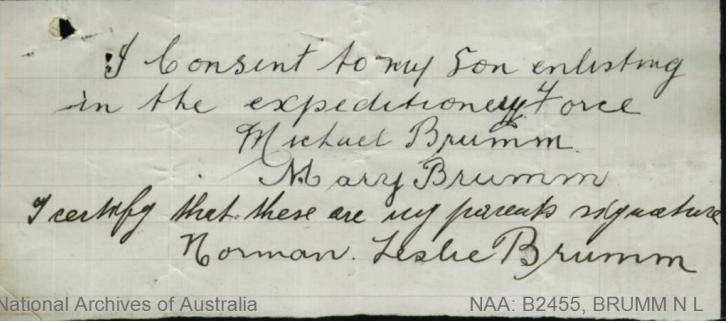
Soon after arrival in Egypt, Norman was formally taken on strength with the 29th Battalion and in June 1916 they proceeded to France, destined for the Western Front. The Battalion fought its first major battle at Fromelles on 19 July 1916. The nature of this battle was summed up by one soldier of the 29th who said:
"the novelty of being a soldier wore off in about five seconds, it was like a bloody butcher's shop".
Norman Killed in Action
On the 19th July 1916, Pte Norman Brumm was killed in action:
Brumm was one of nine soldiers of his platoon to be killed at Fromelles, there were only two survivors…In the chaotic fighting, Brumm was originally reported as missing in action. However, German authorities later found his identity disk and confirmed that he had been killed. His body was not found on the battlefield….
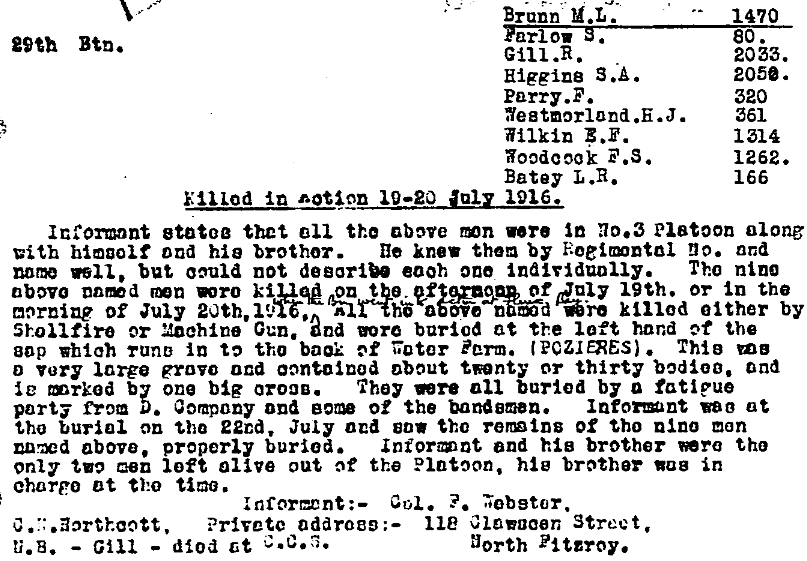
The sap (a short covered trench / tunnel) is probably on the Mine Ave end of the trench (marked in blue in the map below) near where the “water farm” is marked.
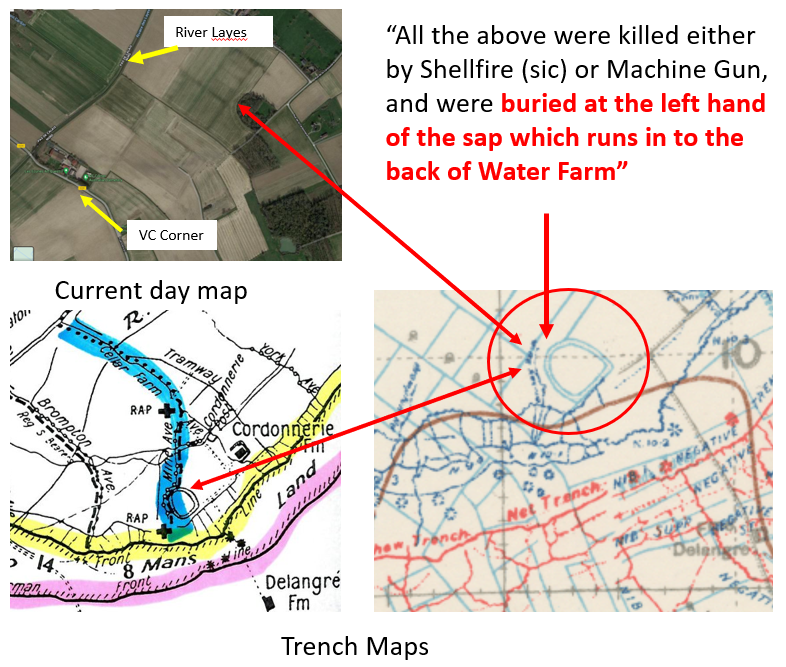
Individual soldiers mentioned in the list of nine were recovered by the German Army, buried in the mass graves and, post-2009, identified by DNA and re-interred at the Pheasant Wood cemetery at Fromelles. There are also similar notes in these soldiers’ AIF files that they are buried at Fleurbaix, and a general map reference, sheet 36, with the exception being Private Robert Gill who died at the casualty clearing station and is buried at the Bailleul Communal Cemetery Extension.
It would have been chaos in the trenches during the battle and in the immediate aftermath, and it is no wonder records of deaths and burials are often non-existent or contradictory. There are no records of these soldiers being found in this vicinity. However, in 2008 a burial ground was located at Pheasant Wood behind the old German front line at Fromelles that contained the bodies of 250 British and Australian soldiers.
Many of their identities, including Fred, were confirmed through a combination of anthropological, archaeological, historical and DNA techniques.
To date (2024), DNA testing has been able to identify 180 of these 250 soldiers.
Despite being identified as being buried in the sap, four of these nine men - Ernest Wilkin, Frederick Parry, Samuel Farlow and Norman Brumm – were identified in 2010 as being buried in the Pheasant Wood Cemetery! Was the original grave disturbed by shelling or otherwise re-opened necessitating re-burial by the Germans?
With four already identified, are the remaining four (Herbert Westmoreland, Francis Woodcock, Lemuel Batey and James Higgins) still amongst those soldiers now buried at the Pheasant Wood cemetery but unidentified?
A handwritten note on Norman’s AIF file simply states:
Believed buried in vicinity of Fleurbaix Sh 36.
Other records also indicate that Norman’s name appeared on a German Death list and his identity disc was returned by German authorities and forwarded to his next of kin. Norman was also awarded the 1914-15 Star, the British War Medal and the Victory Medal.
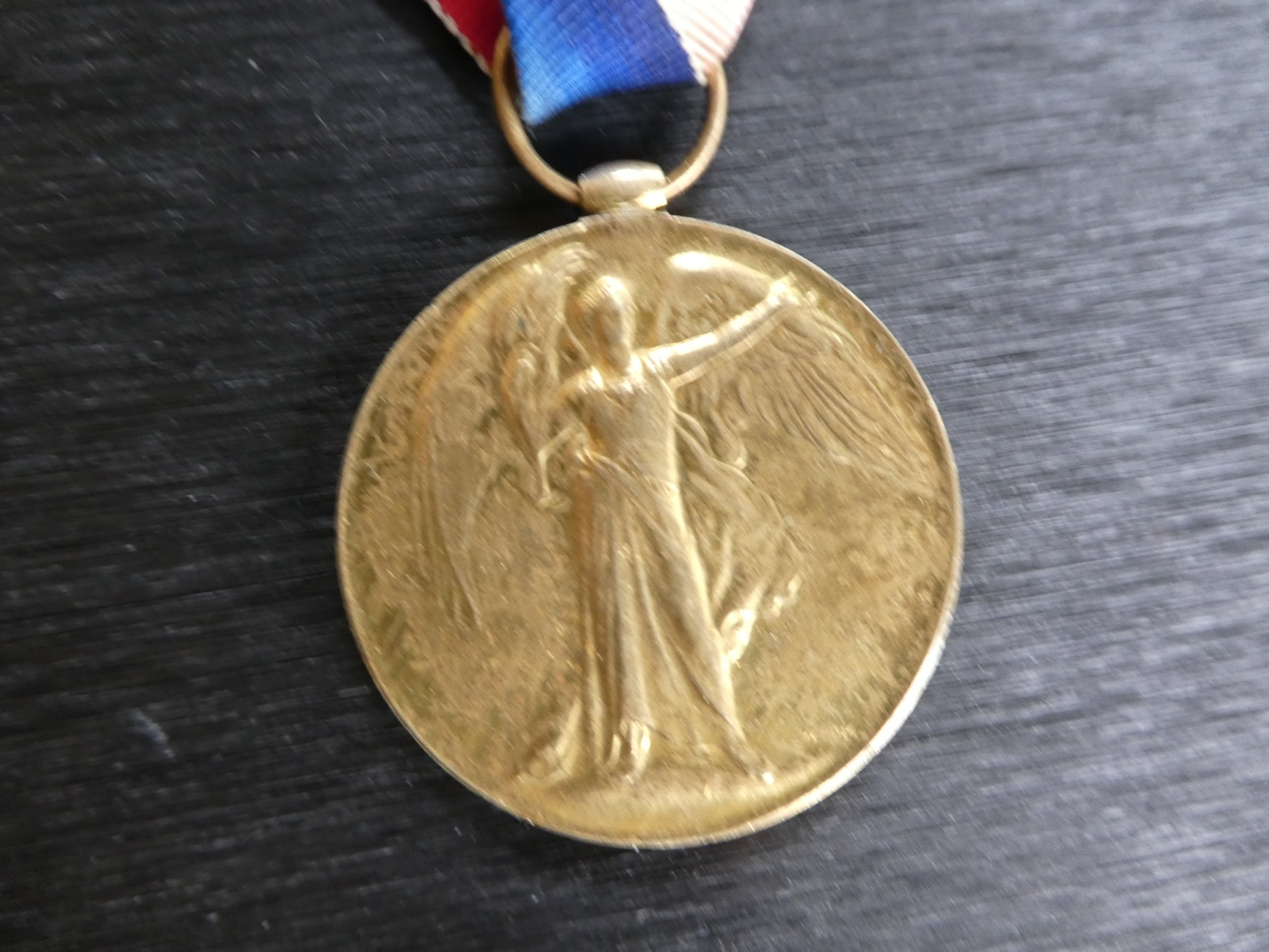
Norman’s family placed numerous notices of memorial for him over the next few years. He was remembered fondly with poems and with heartfelt words.
Remembering Norman – Found at Last
In 2008, a burial ground was located at Pheasant Wood near Fromelles containing the bodies of 250 British and Australian soldiers including Norman. All of the remains were reburied in the newly created cemetery at Fromelles during the early months of 2010. On July 19th, 2010 - along with 95 other soldiers - Norman’s headstone was revealed as a permanent memorial to his sacrifice. His remains had been identified using DNA from his nephew, Albert, and another unknown donor. Albert is the youngest of four sons of Norman’s eldest brother. Norman’s headstone at the Pheasant Wood cemetery was revealed on 19th July 2010 at a ceremony to honour the 250 soldiers found - Plot I, Row B, Grave No 5. In addition to this headstone, Norman is commemorated at the Albury War Memorial and at St Matthew’s Church in Albury.
Norman’s final resting place is known and honoured at last.

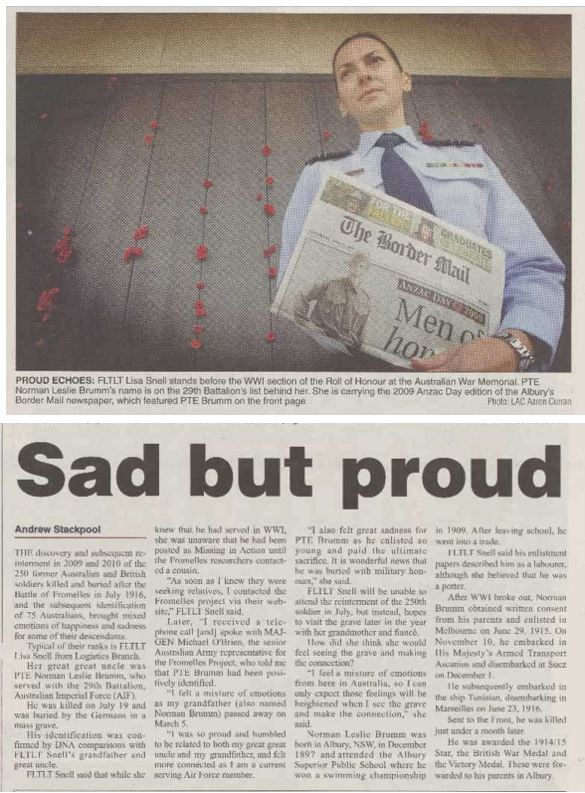
Mary Anderson also expressed her pride in her great-uncle’s service and emphasized the importance of remembering these young men and the values they upheld:
“I believe this Project is extremely important for the surviving families of these young men who volunteered to fight and die for the human rights of people they didn’t even know from all around the world. It is important to us that they be remembered, and the values they died for are continued every day. The values of equality, humanity, courage, mateship, respect and supporting other people’s rights. I hope this is of some help to the wonderful people who are writing the stories of these men and boys who experienced the hell of the Battle of Fromelles.”
And finally, the following poem published by the Lee Family (Norman’s aunt and cousins) is a lovely way to remember Norman:
He sleeps not in his native land,
But under foreign skies;
Far from those who loved him,
In a hero's grave he lies.
He never shunned his country's call,
He gladly gave his life, his all;
He died the helpless to defend,
An Australian soldier’s noble end.
Source: Family Notices (1917, July 20). The Age (Melbourne, Vic. : 1854 - 1954), p. 1. Retrieved October 14, 2021, from http://nla.gov.au/nla.news-article155150110
Lest we forget
Links to Official Records
The Fromelles Association would love to hear from you

Contacts
(Contact: carla@fromelles.info or geoffrey@fromelles.info).
(Contact: army.uwc@defence.gov.au or phone 1800 019 090).
Donations
If you are able, please contribute to the upkeep of this resource.
(Contact: bill@fromelles.info ).


